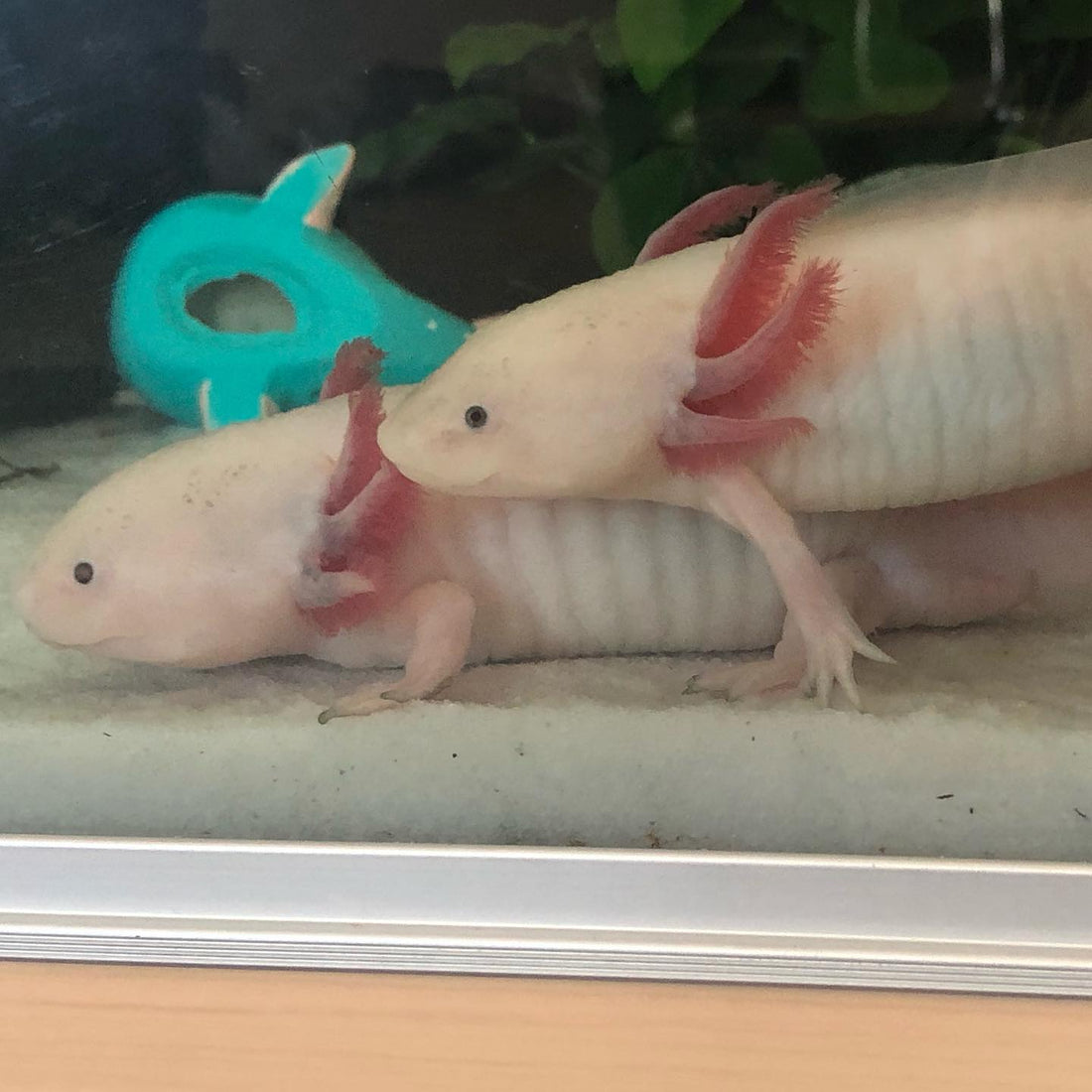
How to Care For Axolotls (Ambystoma Mexicanum)
Share
Axolotls are amazing and crazy creatures! They aren't a very common pet but they are definitely special.
Axolotls are a type of salamander, but unlike other salamanders, they do not undergo physical changes, from a larvae (juvenile) to full grown Axolotl. They stay at the juvenile stage for their entire life. Axolotls are fully aquatic and can not live outside of the water.
Axolotls can range in colour or morph such as golden, albino, leucistic (white with black eyes and pink gills) , black and many more.

(Mulan & Mushu are Leucistic.)
Housing
These animals are not too difficult to care for but do have some specific needs. As they are fully aquatic they require a fish tank, it is recommended that one Axolotl has a 20 gallon (80 litres) aquarium, with plenty of floor space as they like to walk around on the substrate. GRAVEL MUST NOT BE USED AS A SUBSTRATE! Axolotls can and will eat the gravel and it will cause compaction the their bowels, this can cause illness. If you want some pebbles or rocks in your aquarium, that's fine, just make sure that the rocks are bigger than the Axolotls head.
Tap water is OK for an Axolotl aquarium, as long as it is pre-treated with a water conditioner to remove the chlorine. The water should be tested at least once a week to ensure nitrates, nitrites and ammonia levels are kept as low as possible.
As Axolotls do not have eyelids they prefer less light and they also prefer to be kept at a cooler temperature, between 16-22 (16-18 is preferable!) degrees Celsius (60 - 71 Fahrenheit). Which in the summer can be very difficult, so we chose to bottle some tank water and freeze it to put into the tank to cool it down. An aquarium chiller is also a very good option but these can get very expensive. So a clip on tank fan is a better choice to make.
Feeding
Axolotls are little food monsters and will eat anything in front of them, including plants and will try to nibble on a hand or two when you're cleaning the tank (we speak from experience). The best food for adult Axolotls is earthworms or night-crawlers, these foods have all of the protein that Axolotls need. As a treat, we occasionally feed Mushu and Mulan river shrimp, so they have to hunt for the food, instead of having the food always handed to them. If the thought of this is horrifying to you don't worry, Axolotls can live happily enough on pellets, we always keep a tub of JBL NovoLotlXL pellets handy incase our batch of worms go bad!
For baby Axolotls we recommend starting with Brine Shrimp, you can check out our blog post here on how we set up our Brine Shrimp hatchery.
After about 3-4 weeks Brine Shrimp won't cut it anymore so we recommend moving onto frozen Blood Worms, these will increase growth until they are big enough to start taking chopped up earthworms.
Temperament
Axolotls are very sweet little animals (basically little water dogs), some Axolotls can be very outgoing and interact with owners. (Mulan follows us around the room, whereas Mushu only cares about us when he is getting fed!).
Unfortunately, they must not be handled too much as it can cause stress and introduce infections to the Axolotl, as they have a slime coat surrounding them. An Axolotls body is mostly cartilage and they have very permeable skin, when they must be handled, it has to be very gently and carefully.
They are very rewarding pets to have and have individual personalities. I recommend everyone should own an Axolotl at least once!

1 comment
Thanks for the information really helpful… will keep in touch..